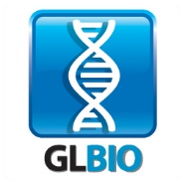Posters
Preparing your Poster - Information and Poster Size
Poster Schedule
Print your poster in Chicago
Poster Categories
View Posters By Category
Session A: (July 7 and July 8) | Session B: (July 9 and July 10) |
|---|---|
Short Abstract: Genome-wide transcriptome analysis is one of the most powerful means to gain a broad and deep insight into the molecular mechanisms that underlie dynamic interactions among numerous genes in organisms. Although several bioinformatic platforms for gene expression profiling have been developed for individual species, platform for cross-species transcriptome analysis is not currently available. We employed the technical concept of translational genomics between different species and aimed to build the platform in user-friendly manner. This DB-linked platform, named LegExpress, harbors wide array of transcriptome data for three representative species with relatively the most comprehensive gene expression information, including Glycine max, Medicago truncatula and Arabidopsis thaliana. All these expression data were collected from publically available ArrayExpress(http://www.ebi.ac.uk/arrayexpress/)DB and composed mainly of Affymetrix GenChip data. Raw data were processed to select high-quality transcriptome data and normalized by the RMA standardization method. We developed a program for visualization of the data and organized the user interface according to suitable criteria, such as organs, developmental stages, time courses and different stimuli (e.g., hormones, biotic/abiotic stresses). It is anticipated that LegExpress may play a useful role for breeder/researcher-friendly transcriptome analysis platform and can be applied to design breeding programs through helping breeders discover trait-associated genes.
Short Abstract: Genetic markers are tools that can facilitate molecular breeding, even in species lacking genomic resources. An important class of genetic markers is those based on orthologous genes, because they can guide hypotheses about conserved gene function. For under-studied species a key bottleneck in gene-based marker development is the need to develop molecular tools that reliably access genes with orthology to the genomes of well-characterized reference species. We report an efficient platform for designing cross-species gene-derived markers in legumes, named CSGM Designer. Use of CSGM designer is enhanced by graphical displays of query results, which we describe as “circular viewer”. CSGM platform provides a virtual PCR representation, called eHT-PCR, that predicts the specificity of each primer pair simultaneously in multiple genomes. CSGM Designer output was experimentally validated for the amplification of orthologous genes using 16 genotypes representing 12 crop and model legume species, distributed among the galegoid and phaseoloid clades. Successful cross-species amplification was obtained for 85.3% of PCR primer combinations. CSGM Designer spans the divide between well-characterized crop and model legume species and their less well-characterized relatives. The outcome is PCR primers that target highly conserved genes for polymorphism discovery, enabling functional inferences and ultimately facilitating trait-associated molecular breeding.












